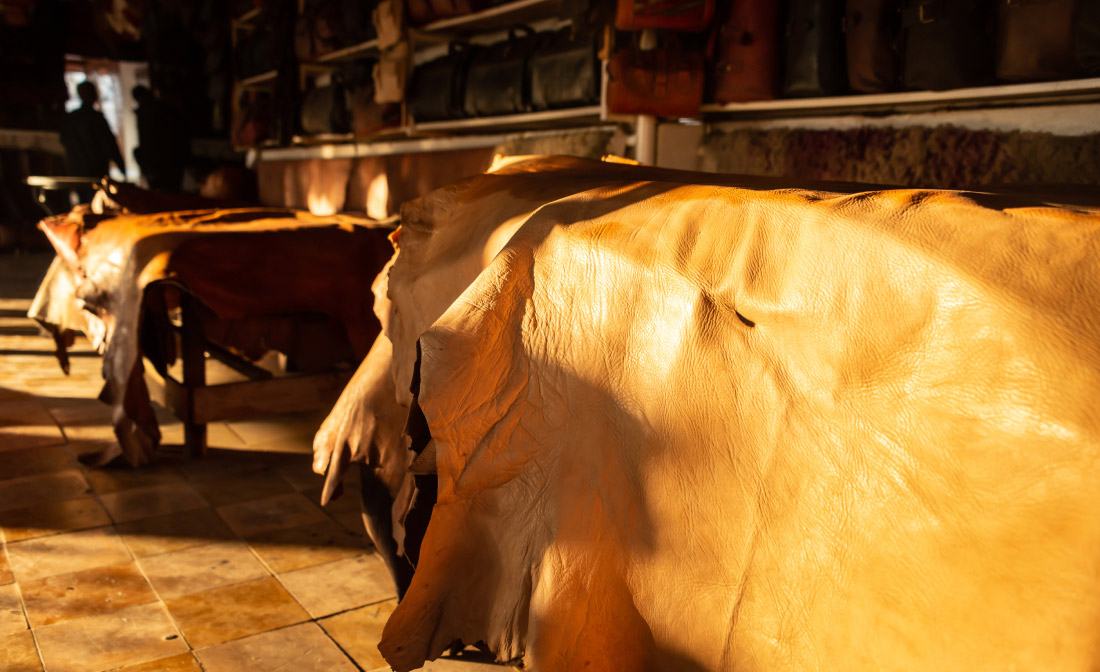In Latin America, the leather manufacturing industry represents a significant economic force, providing jobs and driving growth in several countries. However, this industry also faces various technological challenges that hinder its potential for further development.
In this article, we will explore the current state of the leather manufacturing industry in Latin America, examine the complex processes involved in leather production, and discuss the specific technological challenges faced by the industry and possible solutions.
Leather industry in Latin America: Overview
Countries like Mexico, Colombia, Brazil, and Uruguay have established themselves as key players in the leather manufacturing industry. For instance, in Colombia, exports of leather, footwear and leather goods reached $167 million in 2021. Leather is also considered a crucial economic product in Mexico.
Uruguay has witnessed steady growth in the leather sector over the past few years, making its presence felt in the international market. Brazil, with a long history in this industry, was the first country to issue legislation dedicated exclusively to leather.
These countries have developed advanced techniques and skilled labor forces, enabling them to produce high-quality leather products that are highly sought after globally.
Latin America's leather industry has also attracted significant foreign investment, further boosting the sector's growth and development. Nevertheless, there is a need for continuous improvement and modernization to maintain competitiveness in an increasingly globalized market.
The leather manufacturing process
The leather manufacturing process involves several stages, each with its unique set of requirements:
- Cleaning
The animal skins are cleaned to remove dirt, hair, and other impurities. This process may involve mechanical or chemical methods to ensure thorough cleansing. Soaking the hides in water and using enzymes or surfactants are common practices in this stage. Proper cleaning is crucial for maintaining the quality and durability of the final product.
- Tanning
The cleaned hides undergo tanning, a process that uses specific chemicals to preserve the skin and prevent decomposition. Tanning also helps improve the skin's resistance to wear and tear. There are various tanning methods, including vegetable tanning, chrome tanning, and aldehyde tanning. Each method imparts different characteristics to the leather, such as color, texture, and resistance to environmental factors.
- Re-tanning
In this stage, the tanned leather is treated with additional chemicals to impart specific properties such as softness, color, or water resistance. Re-tanning agents include oils, resins, and synthetic polymers. This stage allows manufacturers to customize the leather for various applications and meet specific market demands.
- Finishing
The final step involves applying surface treatments like dyes, pigments, or protective coatings to achieve the desired look and feel of the finished leather. Finishing techniques may include spraying, roller coating, or hand application. The type of finish used depends on the desired appearance and performance characteristics of the final product.
Throughout these stages, it is necessary to source and manage chemicals, maintain machinery, and transport materials efficiently. Proper quality control measures must also be in place to ensure consistent output.
Technological challenges and possible solutions
The leather industry in Latin America faces a number of challenges, including the need for efficient resource management, sustainable practices, and enhanced automation. Some specific challenges include:
Labor-intensive processes
Many stages in the leather production process still rely heavily on manual labor, making it difficult to scale production efficiently. The introduction of advanced machinery and automation could help reduce the reliance on manual labor and increase productivity.
Supply chain management
Ensuring a consistent and reliable supply of raw materials and chemicals is critical for uninterrupted leather production. Better forecasting and inventory management systems can help mitigate supply chain disruptions and minimize production delays.
Environmental concerns
The leather manufacturing process produces waste and pollutants, which can harm the environment. There is a growing need for sustainable practices and waste management solutions, such as cleaner production methods, recycling, and wastewater treatment technologies.
ERP solutions, such as the 1C:Drive system, can play a vital role in addressing these challenges. By offering a comprehensive management system for medium and large industries, ERP solutions can streamline processes, improve resource allocation, and enhance overall efficiency.
These systems allow managers to make informed decisions based on real-time data and analytics, leading to more effective planning and resource optimization. This, in turn, can reduce costs and increase profitability.
Inventory management is another crucial advantage of implementing ERP systems. With a centralized system to manage raw materials, chemicals, and finished products, leather manufacturers can maintain optimal inventory levels, minimize waste, and prevent stockouts.
Quality control and traceability are also greatly enhanced with ERP solutions, as these systems can track materials and products throughout the production process. This provides complete visibility and traceability, enabling better quality control and compliance with the industry and ecological standards.
Final thoughts
The leather manufacturing industry in Latin America holds immense potential for growth and economic contribution. By addressing technological challenges and implementing ERP solutions like 1C:Drive, the industry can overcome obstacles, improve sustainability, and ultimately increase competitiveness in the global market.
